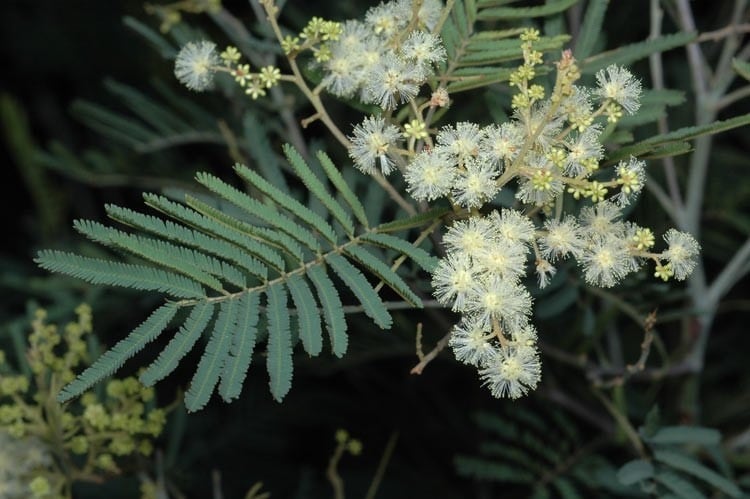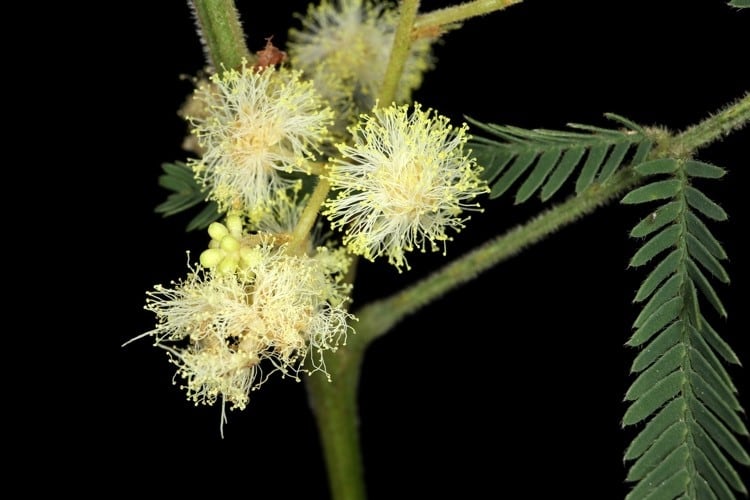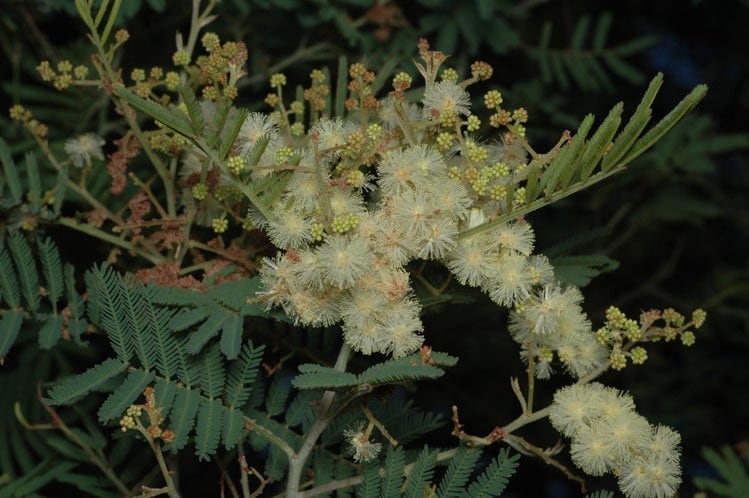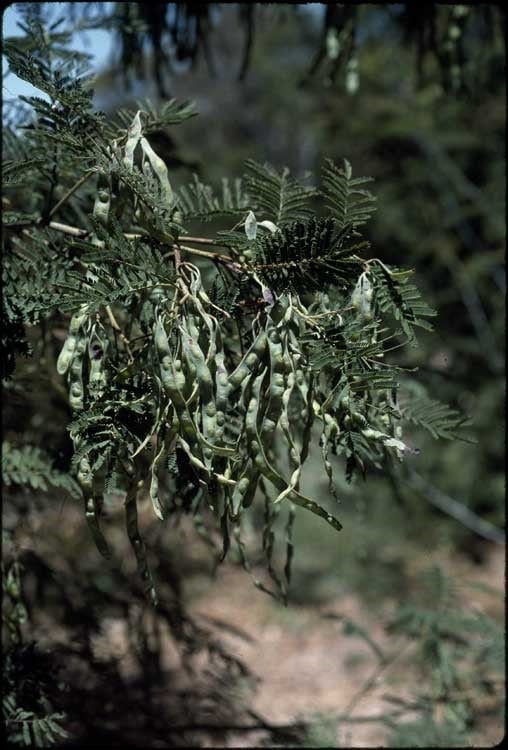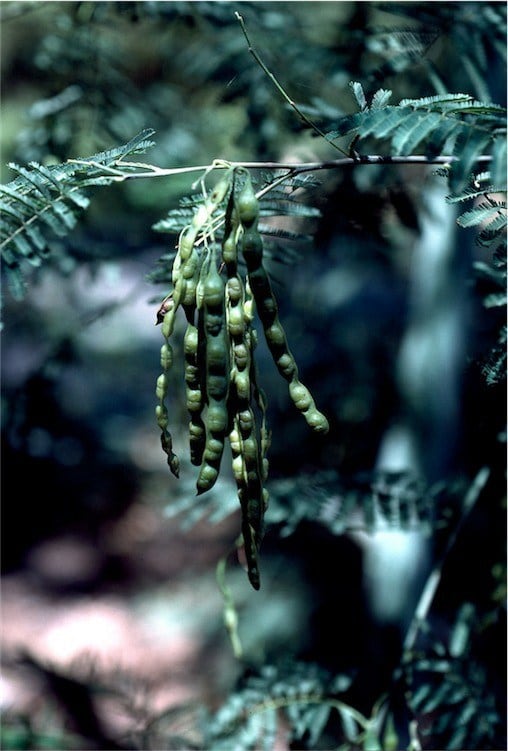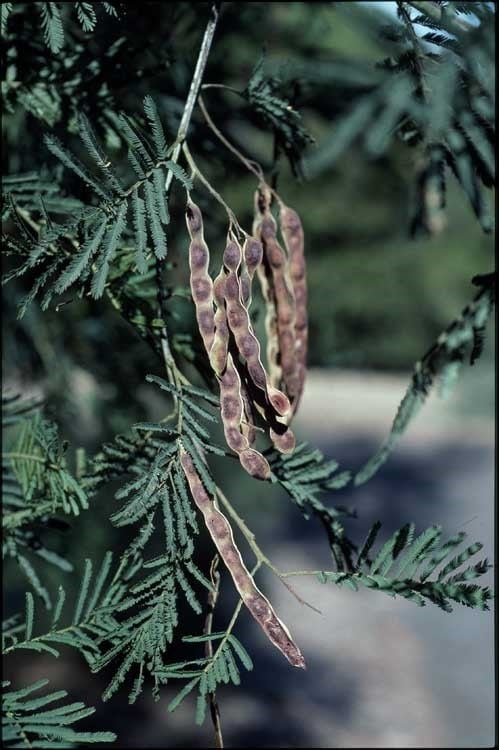Acacia parvipinnula Tindale
WATTLE
Acacias of Australia
Common Name
Silver-stemmed Wattle
Family
Fabaceae
Distribution
Occurs in N.S.W. from Hunter R. Valley to S of Goulburn, the coast, tablelands and western slopes as far W as Goulburn R., common in Howes Valley–Colo region and lower slopes of Blue Mtns.
Description
Shrub or tree 2–10 m high. Bark smooth, very silvery or blue-grey. Branchlets terete or angled, with short, rather stiff, somewhat spreading, tawny, white or grey hairs, later ±glabrous, dark brown, often pruinose. Young foliage-tips white or yellow, velvety-pubescent. Leaves herbaceous to subcoriaceous, dark green; petiole above pulvinus mostly 0.5–1.7 cm long, flattened vertically, with (1–) 2–4 (–6) oblong or spherical, puberulous glands; rachis 1.5–8 cm long, ±flattened vertically, usually with a gland at base of all or most pairs of pinnae, sometimes absent, 1–3 oblong or spherical often contiguous interjugary glands between pairs of pinnae; pinnae 4–13 pairs, 1–5 cm long; pinnules 13–42 pairs, narrowly oblong to cultrate, 2–4 (–5.5) mm long, 0.5–1 mm wide, margin and often lower surface with sparse appressed to spreading white hairs, ±glabrous above, obtuse. Inflorescences in axillary racemes, or terminal or axillary false-panicles; peduncles 2–5 mm long, mostly hairy. Heads 14–20-flowered, pale yellow; flower buds spreading. Pods slightly and often irregularly more deeply constricted between seeds, 2–17 cm long, 5–9 (–11) mm wide, coriaceous, bluish brown or bluish black, glabrous or with minute appressed hairs.
Phenology
Flowers Sept.–early Dec., sometimes also Apr.–July; fruits mainly Sept.–Jan., Mar.
Habitat
Grows in open forest, on plateaux or alluvial flats, on shale, laterite or sandstone.
Specimens
N.S.W.: Darkey Ck, 8 miles [12.8 km] SW of Bulga, R.Coveny 4615 (A, B, BRI, BRUX, K, LE, NSW, PERTH, RSA, UC); Menai, G.D’Aubert 414 (MEL, NSW); Broken Back Ra., Hunter Valley, A.V.Slee 2326 (CANB, NSW); 2 miles [3.2 km] E of Kurri Kurri, M.D.Tindale s.n. (NSW64666); Maroota, M.D.Tindale s.n. (NSW52274).
Notes
Acacia parvipinnula is closely allied to A. filicifolia, although the latter is characterised by much broader, bluish, unconstricted pods, usually 23–68 pairs of pinnules, and the flowering time is earlier, i.e. late July to Sept., rarely extending into Oct. On the Colo R. flats where both species are common, A. filicifolia has completed flowering before the trees of A. parvipinnula are in flower, this being an important factor in preventing hybridisation. In the northern part of its range, i.e. near Cessnock, the latter species flowers earlier than at Colo Heights and Blaxland, where the principal flowering time is Nov.
Acacia parvipinnula may be confused with A. parramattensis which has non-pruinose branchlets and a greater number of flowers per head (20–50-flowered), A. irrorata subsp. irrorata which has scabrous ridges on the branchlets, and A. irrorata subsp. velutinella which has crisped hairs on the ridges and occurs further to the north of the distribution of A. parvipinnula.
FOA Reference
Data derived from Flora of Australia Volumes 11A (2001), 11B (2001) and 12 (1998), products of ABRS, ©Commonwealth of Australia
Author
M.D.Tindale, P.G.Kodela
Minor edits by B.R.Maslin & J.Reid
This identification key and fact sheets are available as a mobile application:
URL: https://apps.lucidcentral.org/wattle/
© Copyright 2018. All rights reserved.

